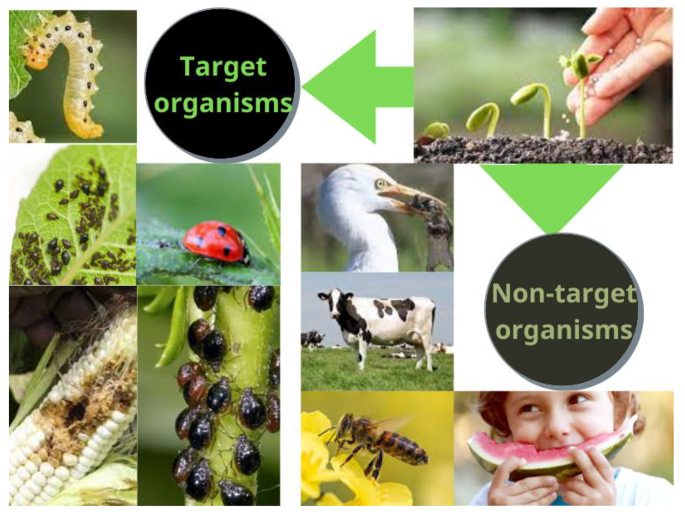Little Known Questions About Eco Bed Bug Exterminators Dc.
Little Known Questions About Eco Bed Bug Exterminators Dc.
Blog Article
Eco Bed Bug Exterminators Dc for Beginners
Table of ContentsThe Only Guide for Eco Bed Bug Exterminators DcHow Eco Bed Bug Exterminators Dc can Save You Time, Stress, and Money.An Unbiased View of Eco Bed Bug Exterminators DcThe 9-Minute Rule for Eco Bed Bug Exterminators DcLittle Known Questions About Eco Bed Bug Exterminators Dc.
Since chemicals are poisonous, they are also possibly hazardous to people, animals, various other microorganisms, and the atmosphere. Consequently, individuals who utilize pesticides or routinely come in contact with them need to recognize the loved one poisoning, possible health impacts, and preventative measures to reduce direct exposure to the items they make use of. Hazard, or threat, of using pesticides is the possibility for injury, or the degree of danger associated with utilizing a pesticide under a given set of problems.
Applicators can reduce or nearly eliminate direct exposure-- and hence minimize danger-- by complying with the label instructions, utilizing personal safety garments and devices (PPE), and dealing with the pesticide appropriately. More than 95 percent of all chemical exposures come from dermal exposure, largely to the hands and lower arms. By wearing a set of unlined, chemical-resistant gloves, this kind of exposure can be virtually removed.
The dangerous effects that take place from a single direct exposure by any type of route of entrance are described "acute impacts." The four paths of direct exposure are dermal (skin), inhalation (lungs), oral (mouth), and the eyes. Severe poisoning is figured out by taking a look at the facial poisoning, breathing toxicity, and dental poisoning of guinea pig.
Eco Bed Bug Exterminators Dc Fundamentals Explained
Acute poisoning is gauged as the amount or concentration of a toxicant-- the a.i.-- needed to eliminate 50 percent of the pets in an examination populace. This procedure is normally revealed as the LD50 (deadly dosage 50) or the LC50 (deadly concentration 50). Furthermore, the LD50 and LC50 values are based on a solitary dose and are videotaped in milligrams of chemical per kg of body weight (mg/kg) of the guinea pig or partially per million (ppm).
The reduced the LD50 or LC50 worth of a chemical item, the higher its toxicity to humans and animals. Pesticides with a high LD50 are the least hazardous to people if made use of according to the instructions on the product label. The chronic toxicity of a pesticide is determined by subjecting test animals to long-term exposure to the energetic ingredient.
The persistent toxicity of a chemical is harder than severe toxicity to determine through research laboratory analysis. Products are classified on the basis of their loved one severe poisoning (their LD50 or LC50 worths). Chemicals that are categorized as highly toxic (Poisoning Group I) on the basis of either dental, dermal, or breathing toxicity must have the signal words risk and toxin published in red with a head and crossbones symbol plainly presented on the front panel of the bundle tag.
The severe (single dosage) oral LD50 for pesticide items in this team ranges from a trace amount to 50 mg/kg. For instance, exposure of a couple of drops of a material taken orally can be fatal to a 150-pound individual. Some chemical items have simply the signal word risk, which tells you nothing concerning the severe poisoning, just that the item can create serious eye damage or severe skin inflammation
Eco Bed Bug Exterminators Dc Things To Know Before You Get This
In this category, the severe oral LD50 varieties from 50 to 500 mg/kg. A tsp to an ounce of this material can be fatal to a 150-pound person (exterminator DC). Chemical products identified as either a little harmful or relatively harmless (Poisoning Groups III and IV) are called for to have the signal word CAUTION on the pesticide label

All pesticide toxicity valuesPoisoning worths the LD50, can be found on discovered product's Material Safety Product Safety and security (MSDS). Chemical tags and MSDS can be gotten from sellers or makes - https://ecobedbug3xt.blog.ss-blog.jp/. The signs of chemical poisoning can vary from a moderate skin irritability to coma or also death.
Because of possible health issues, pesticide customers and trainers should recognize the usual signs and signs of chemical poisoning. The results, or signs, of pesticide poisoning can be generally defined as either topical or systemic.
9 Simple Techniques For Eco Bed Bug Exterminators Dc
Dermatitis, or swelling of the skin, is approved as one of the most typically reported topical effect linked with chemical direct exposure. Symptoms of dermatitis array from reddening of the skin to rashes and/or sores. Some people often tend to cough, wheeze, or sneeze when exposed to pesticide sprays. Some people respond to the solid smell and annoying results of petroleum distillates utilized as carriers in pesticide items.
This symptom typically subsides within a few minutes after a click this site person is removed from the exposure to the irritant. Nevertheless, a reaction to a pesticide item that causes a person not just to sneeze and cough but likewise to develop severe acute breathing signs is more likely to be a true hypersensitivity or sensitive response.
Systemic impacts are fairly various from topical impacts. They commonly occur away from the original factor of contact as an outcome of the pesticide being soaked up right into and dispersed throughout the body. Systemic results typically consist of queasiness, throwing up, tiredness, migraine, and intestinal tract conditions. In sophisticated poisoning instances, the person may experience changes in heart rate, difficulty breathing, convulsions, and coma, which can lead to death.
Report this page